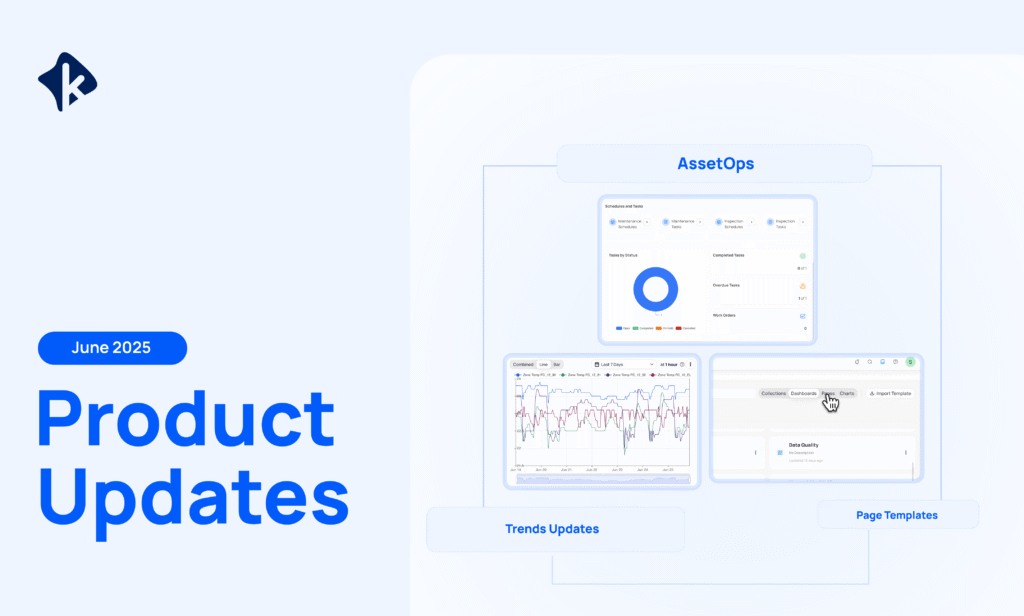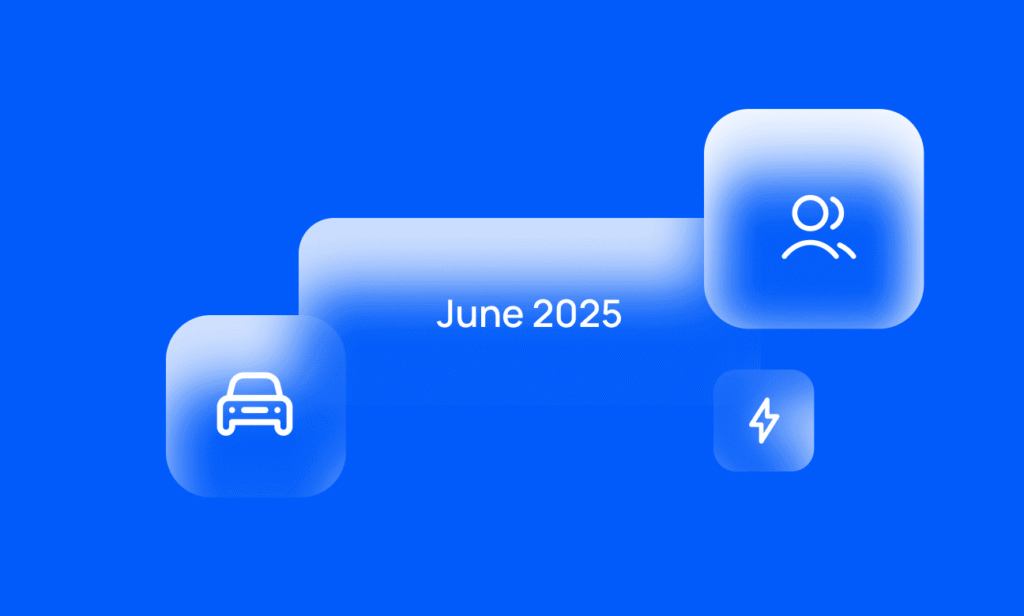On this page
Sign up to our newsletter
Subscribe to receive the latest blog posts to your inbox every week.
By subscribing you agree to with our Privacy Policy.
As the colder months approach, it’s time to ensure your building systems are ready for the heating season. A well-prepared building not only optimizes tenant comfort, but also enhances operational efficiency and minimizes downtime. To help you get started with the preparations for the heating season, we wanted to share some insights and tips on testing and optimizing your systems, including heating focused FTT tests, various FDD routines you should be aware of, and schedule adjustments. Think of this as a checklist to ensure your systems are in prime condition for winter.

Prepare for heating season: Optimal performance through proactive testing
One of the key steps to get ahead of potential issues is running functional tests on heating equipment before temperatures drop. By being proactive, you can catch problems early and prevent uncomfortable or disruptive situations during peak heating demands.
Proactive heating testing using Functional Testing Tool (FTT)
Run proactive FTT on your heating equipment regularly during this shoulder season to ensure everything operates smoothly when the heating load increases.
- The best time to run these tests is before the season is in full swing, allowing you to inspect your FCUs, VAV systems, and AHUs when the demand for heating isn’t yet critical. If any of your heating components, like coils, are not functioning as expected, you’ll have the time to fix them before they become problematic.
- Consider setting up recurring daily tests in early mornings or late afternoons for minimal disruption. The sooner you identify a potential issue, the sooner it can be resolved.
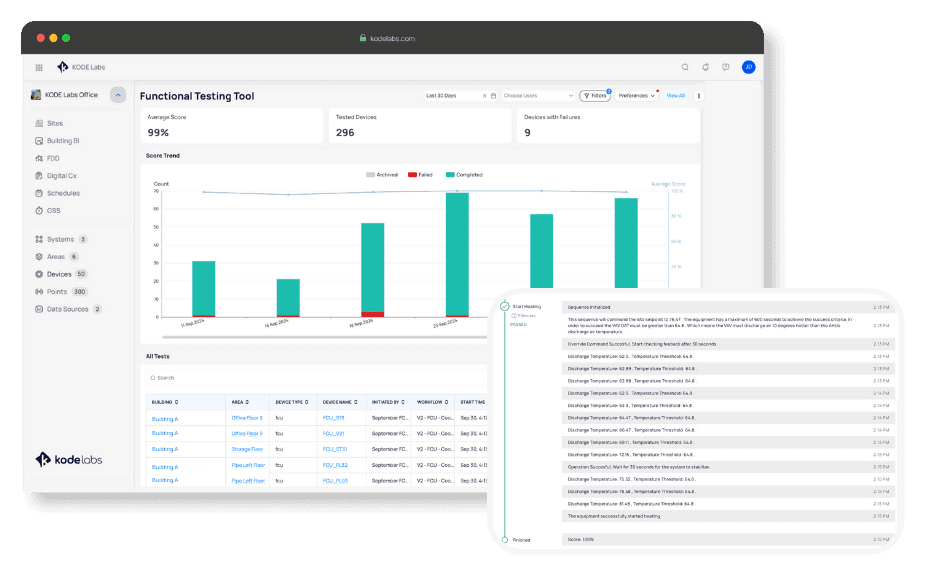
Boost efficiency with heating focused FDD routines
Detecting issues early can save time and money in the long run. This is where Fault Detection & Diagnostics (FDD) routines come in handy.
Heating related FDD routines
Throughout the heating season, continuous FDD monitoring will keep an eye on potential system inefficiencies or faults. Some routines you should be aware of that are critical for heating operations include:
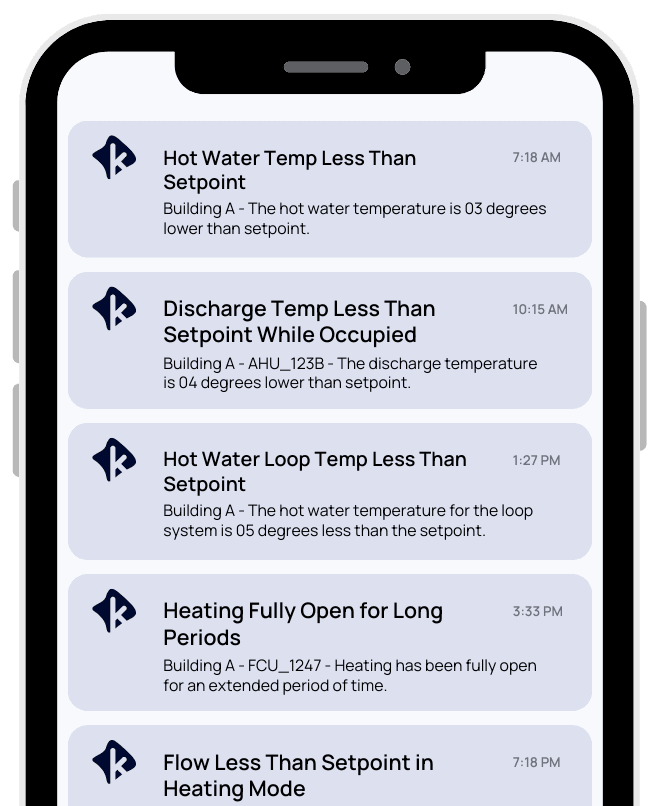
Boiler: Hot water temperature falling below setpoint
AHU: Discharge temperature less than setpoint during occupied hours
VAV & FCU: Cold zones, Insufficient heating, or damper failures
Heating system stuck fully open: Prolonged heating without modulation can lead to excessive energy use and uncomfortable indoor conditions.
By monitoring these parameters 24/7, FDD routines help you spot inefficiencies or potential failures before they escalate into larger issues. Acting quickly on FDD alerts ensures optimal system performance and lowers the risk of costly emergency repairs during the coldest months.
Maximize comfort & energy savings with smart adjustments
As temperatures drop, the goal is to maintain comfort while optimizing energy efficiency. Leveraging data and intelligence can help you strike that balance.
Comfort & energy monitoring through Building BI (analytics) dashboards
Customizable Building BI dashboards offer real-time insights into comfort metrics and energy consumption. You can easily visualize comfort trends and energy usage across your entire portfolio or building and make informed adjustments as needed.
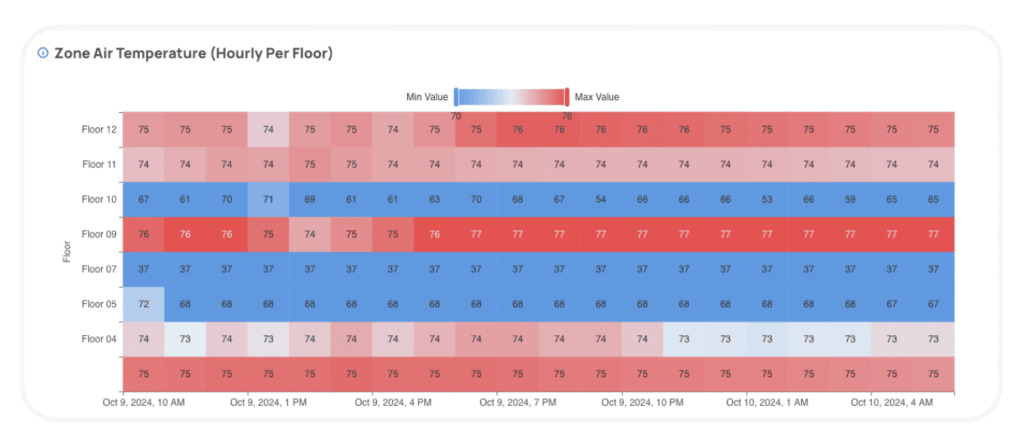
Let OSS guide your operations or adjust schedules
If you’re already using Optimized Start/Stop (OSS), rely on it to smoothly manage the transition into the heating season by closely monitoring and fine tuning your schedules. For those with set schedules, be sure to adjust them accordingly to dropping temperatures to prevent unnecessary energy usage during colder months.
Review setpoints and utilize Mass Write
Don’t forget to review heating setpoints and ensure they’re optimized for comfort and energy efficiency. The “Mass Write” functionality makes it easy to adjust setpoints across multiple devices simultaneously, making it a time-efficient way to prepare for winter.
A few additional tips on proactive maintenance & energy monitoring
- Proactive Maintenance: Take the time to review and update your maintenance schedules to account for the increased strain on systems during winter.
- Energy Consumption Monitoring: Did you know that buildings can see up to a 30% increase in energy consumption during the heating season? By applying the tips mentioned above, like: proactive testing, optimized schedules, and FDD monitoring, you can mitigate this increased cost and achieve significant energy savings.
Implementing these steps will help you maintain reliable heating performance during the colder months while optimizing energy efficiency and ensuring tenant comfort.
Prepare now to avoid costly inefficiencies later.
For more information on optimizing your building systems for the heating season, or to explore how these functionalities can benefit your operations, book a demo today!

